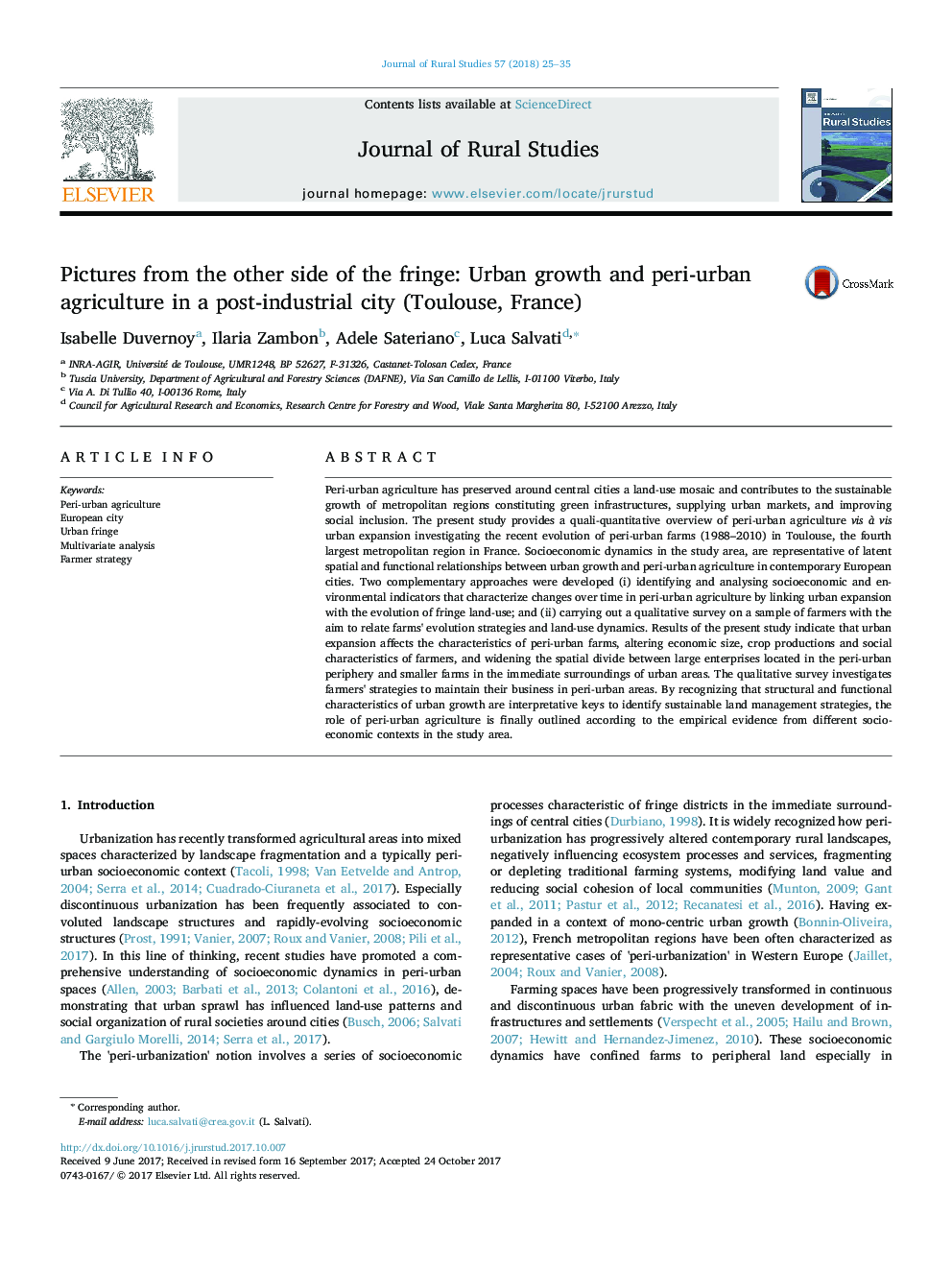| Article ID | Journal | Published Year | Pages | File Type |
|---|---|---|---|---|
| 6545347 | Journal of Rural Studies | 2018 | 11 Pages |
Abstract
Peri-urban agriculture has preserved around central cities a land-use mosaic and contributes to the sustainable growth of metropolitan regions constituting green infrastructures, supplying urban markets, and improving social inclusion. The present study provides a quali-quantitative overview of peri-urban agriculture vis à vis urban expansion investigating the recent evolution of peri-urban farms (1988-2010) in Toulouse, the fourth largest metropolitan region in France. Socioeconomic dynamics in the study area, are representative of latent spatial and functional relationships between urban growth and peri-urban agriculture in contemporary European cities. Two complementary approaches were developed (i) identifying and analysing socioeconomic and environmental indicators that characterize changes over time in peri-urban agriculture by linking urban expansion with the evolution of fringe land-use; and (ii) carrying out a qualitative survey on a sample of farmers with the aim to relate farms' evolution strategies and land-use dynamics. Results of the present study indicate that urban expansion affects the characteristics of peri-urban farms, altering economic size, crop productions and social characteristics of farmers, and widening the spatial divide between large enterprises located in the peri-urban periphery and smaller farms in the immediate surroundings of urban areas. The qualitative survey investigates farmers' strategies to maintain their business in peri-urban areas. By recognizing that structural and functional characteristics of urban growth are interpretative keys to identify sustainable land management strategies, the role of peri-urban agriculture is finally outlined according to the empirical evidence from different socioeconomic contexts in the study area.
Related Topics
Life Sciences
Agricultural and Biological Sciences
Forestry
Authors
Isabelle Duvernoy, Ilaria Zambon, Adele Sateriano, Luca Salvati,
